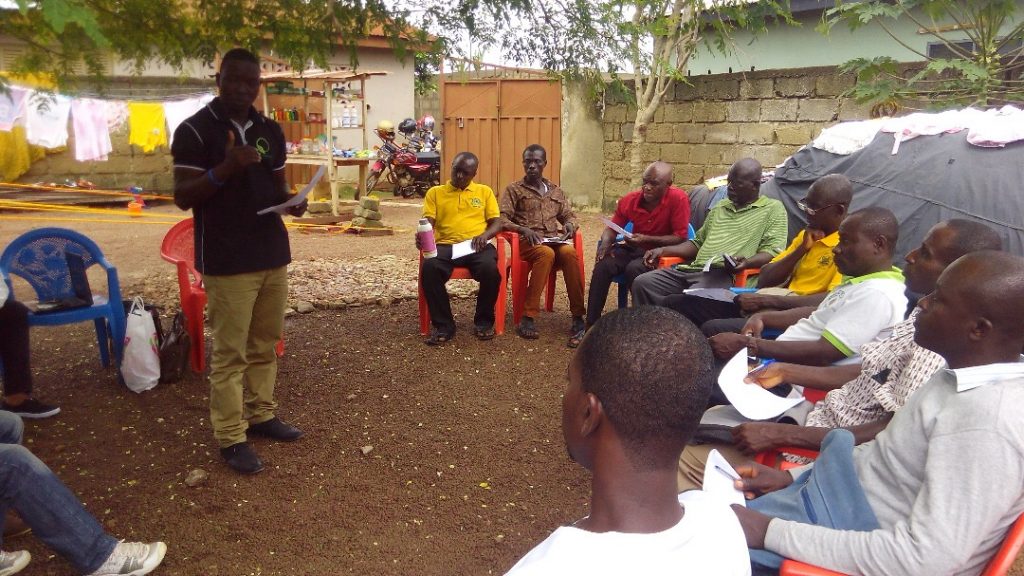

Farmerline’s Director of Farmer Services, Schandorf Adu-Bright, shares insights on how to become a successful workshop facilitator.
Leading a workshop is always daunting.
You can be extremely prepared but you never really know what kind of group dynamic you will meet in a workshop room. It is therefore extremely important that a workshop facilitator shares all about how to effectively get people to discuss strategy and innovation ideas, progress and next steps at a workshop.
We asked our own Director of Farmer Services, Schandorf Adu-Bright, who is successful workshop facilitator, to share valuable guidelines and tips on how a facilitator can brush up on their approach, and ensure that attendees are guided towards productive results from a workshop session.
- Start the meeting with an introduction; present yourself, your organisation, and explain what your role in your organisation is. Give detailed address to your organisation’s office(s). Introduce all other persons who are with you on the trip, but be more intentional about some details to establish credibility. An example of this is explaining the benefits of the products and services your organisation offers, partners, customers, and the impact that the services and products you provide have made. This builds trust. Then, allow your participants (depending on their number) to introduce themselves. Always observe and acknowledge all community leaders present at your workshop.
- State clearly the purpose of the workshop and explain what participants would gain from the workshop.
- During your facilitation process, acknowledge and respect the views of others, and let everybody feel cherished and appreciated. Never tell a participant that their answer is wrong. Show appreciation for their courage to speak up, and then politely reveal the gaps in the given answer. When done well, the participant would admit the wrong in their answer.


4. Be open-minded to new ideas and opinions, and ask thought-challenging questions to initiate discussion. Here are some phrases you can use to open up discussions: I. What would happen if we did? II. In your experience, what do you think would work? III. Tell me about…… IV. What do you think about? V. What ideas do you have?
- Discuss issues, never personalities. You can disagree with someone without disliking them.
- Avoid the use of phrases like “good idea but…….” Whenever you use but, people instantly become aware of the negative ending. You can say, “It’s a good idea. Can we think of it this way?”
- Always avoid confrontations and stay away from local/national politics. Often times, this creates tension and may spark anger among participants. Some participants may want to reveal their political colours and will intentionally seek your comments on some political issues to validate their assumption. However, as a professional, it is okay to fairly point out certain gaps in some national policies.
- As a facilitator, ensure your participants speak one at a time. This helps to maintain order and allows everyone one to be heard. If there is someone taking notes, speaking one at a time helps them to record all the salient points.
- Keep comments brief and relevant. Some attendees may be busy people and a precious use of their time would be in their interest.
- Be enthusiastic and use the right tone.
- Don’t dress to attract attention on yourself rather than your message. Where possible, you’re your organisation’s branded shirts. Female participants should also be moderate with their makeup, so not to distract participants.
- Be vulnerable. If you share a personal story relevant to your message or particular point, your message would be well received.

- Let everyone know that what is discussed is confidential and will not be used outside the workshop.
- If you are not fluent in the local dialect of the area where you are conducting the workshop, get a translator and engage them about your message before the workshop.
- Summarise the main points at the end of the presentation and initiate the action points.
- Get snacks and drinks so the people will feel more comfortable. Soft music can also help.









